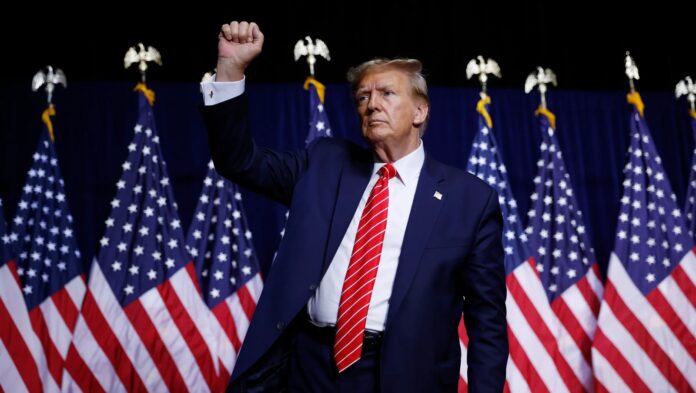President-elect Donald Trump has emerged as the projected winner of the 2024 election, defeating Vice President Kamala Harris to secure the highest office in the country. Trump has claimed victory in several key battleground states and is also leading in the popular vote, a contrast to the 2016 election outcome.
While Trump’s victory was projected on Wednesday, Nov. 6, it will be several months before he officially takes office. Here’s what to know about his inauguration and when he will be sworn in as president.
When Will Trump Be Sworn In?
President-elect Trump is set to be sworn in during the presidential inauguration, which will take place on January 20, as mandated by the 20th Amendment of the U.S. Constitution. The moment he takes the oath of office, Trump will become the president, and he will typically move into the White House shortly thereafter. While Trump has vowed to end the war in Ukraine before Inauguration Day, he currently has no presidential powers until his official swearing-in. He has also promised to dismantle ObamaCare and initiate mass deportations of migrants during his presidency.
In his final message before Election Day, Trump expressed optimism about his presidency: “After all we have been through together, we stand on the verge of the four greatest years in American history. You watch, it’s going to be so good, it’s going to be so much fun. It’ll be nasty a little bit at times, and maybe at the beginning, in particular, but it’s going to be something.”
What Happens on Inauguration Day?
Inauguration Day, which takes place about two and a half months after the election, begins with a procession to the Capitol. The Vice President is sworn in first, taking the oath of office, followed by the President-elect at noon. After taking the oath, the new president delivers an inaugural address, which typically outlines their vision and goals for the term ahead.
At his first inauguration, Trump declared his intent to “transfer power from Washington, D.C., and give it back to you, the American people.” Following the speech, the outgoing president departs in a ceremonial fashion, and the new president signs their first official actions. This is followed by various ceremonial events, including a pass-in review, where the president and vice president review military troops before leading a procession of military regiments, citizens’ groups, floats, and marching bands from the Capitol to the White House.
The Oaths of Office
Both the President and Vice President-elect must recite an oath of office as required by the U.S. Constitution. The President’s oath is as follows:
“I do solemnly swear (or affirm) that I will faithfully execute the Office of President of the United States, and will to the best of my ability, preserve, protect and defend the Constitution of the United States.”
The Vice President’s oath, which is the same as that taken by senators, representatives, and other federal employees, is:
“I do solemnly swear (or affirm) that I will support and defend the Constitution of the United States against all enemies, foreign and domestic; that I will bear true faith and allegiance to the same; that I take this obligation freely, without any mental reservation or purpose of evasion; and that I will well and faithfully discharge the duties of the office on which I am about to enter: So help me God.”




